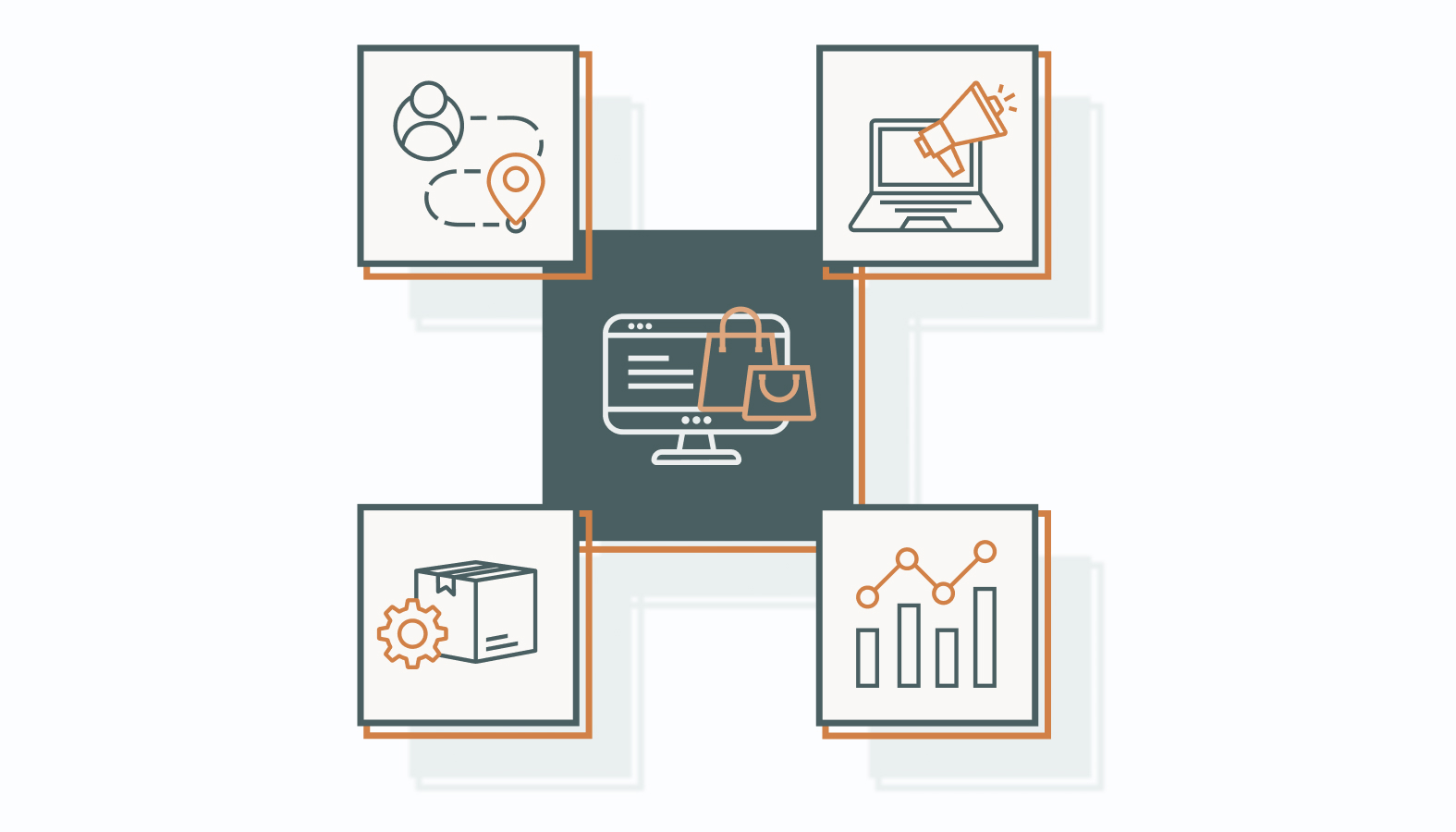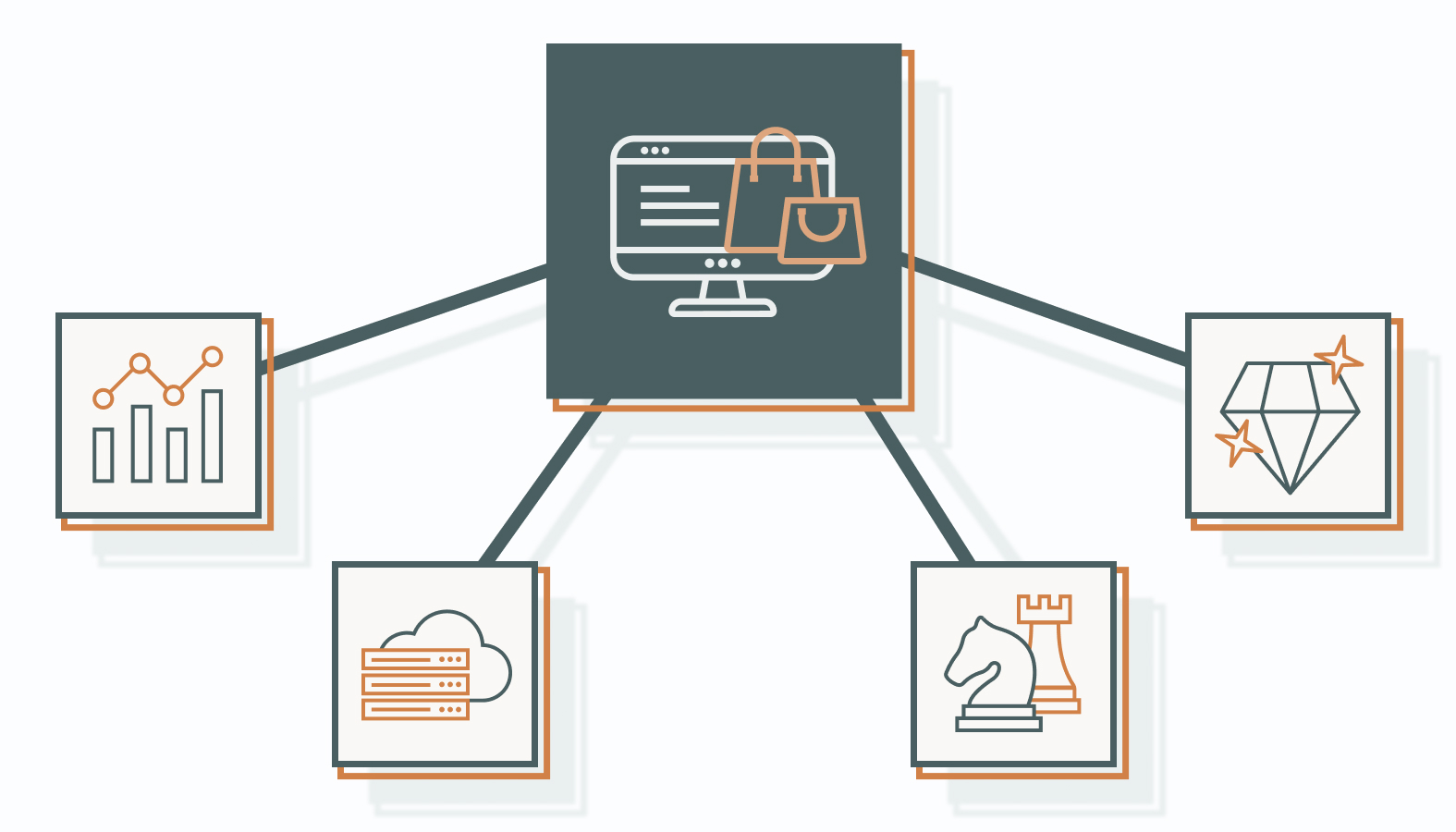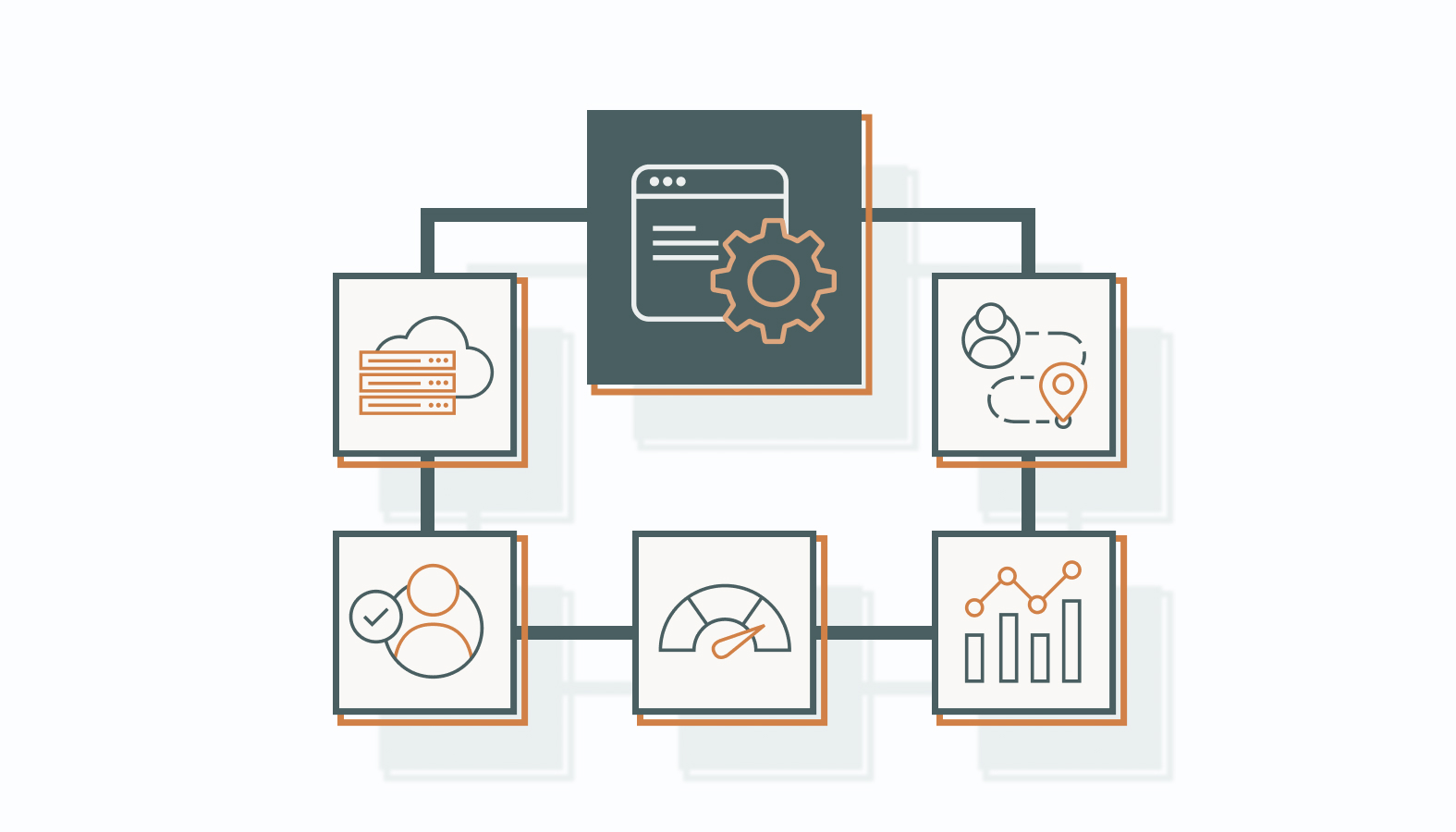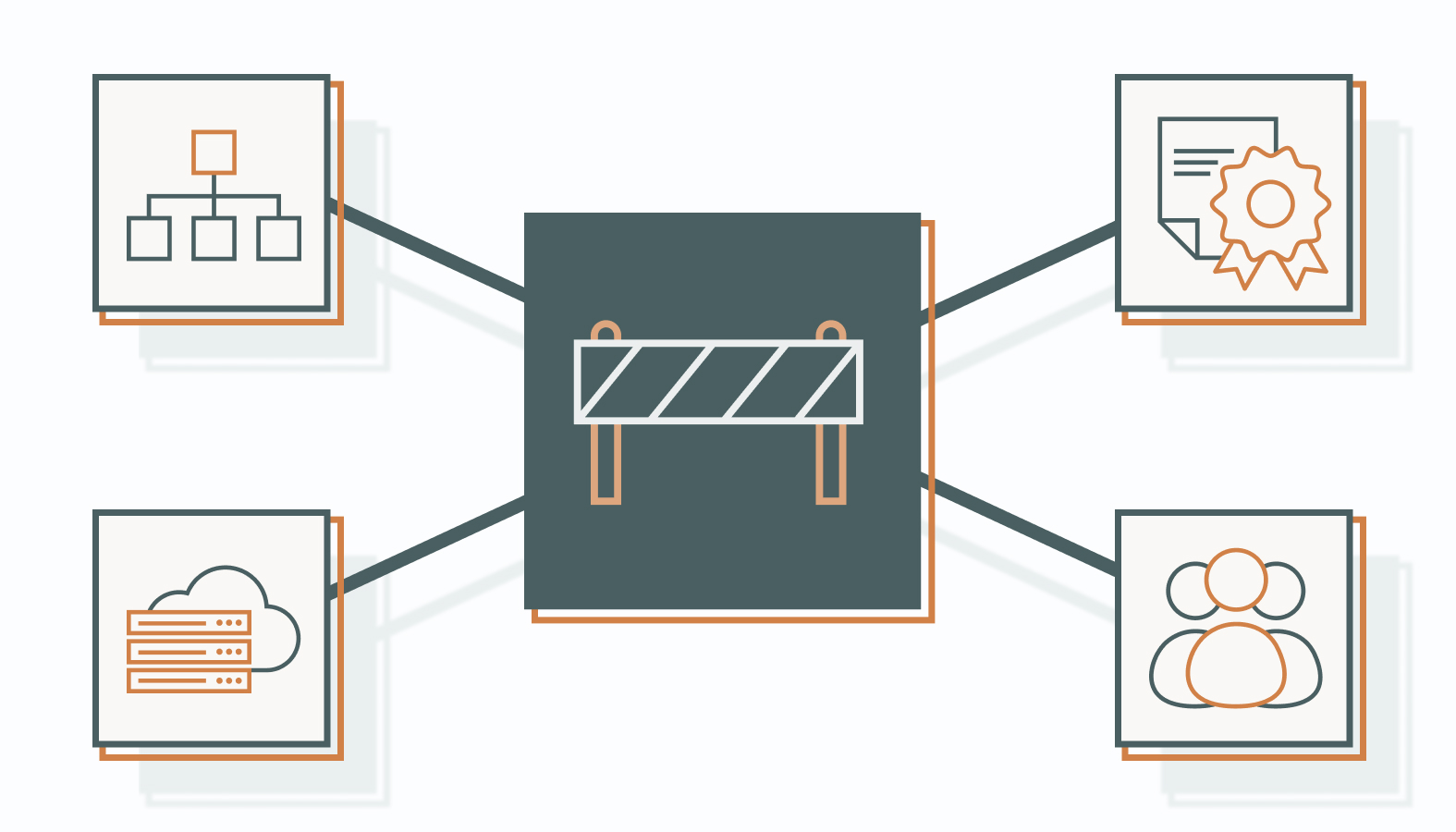If you’re running an ecommerce business without analytics, you’re not just behind. You’re operating with the lights off.
In a world where your competitors optimize in real-time, relying on gut instinct is a fast way to burn through ad spend, misread your customers, and stall growth. The truth is, data isn’t optional anymore; it’s your edge.
Ecommerce analytics gives you visibility: what’s working, what’s wasting money, and what needs your attention now. But here’s where things go sideways for a lot of teams. Drowning in dashboards. Paralysis by analysis. Tools collecting dust because no one knows how to translate metrics into action.
This guide explains what to track, how to interpret the numbers, and how to turn insights into strategic moves that drive business growth.
Foundations of Ecommerce Analytics
Why is ecommerce analytics essential for growth in a competitive market?
Learn how ecommerce analytics turns data into your most powerful business asset and how it gives you the foresight needed to drive smart decisions and real growth.
What Is Ecommerce Analytics? Understanding Metrics, KPIs & Data Strategy
Ecommerce analytics is more than just spreadsheets and dashboards. It’s a disciplined approach to interpreting data, spotting trends, and translating insights into action.
Here’s the breakdown:
Analytics, metrics, and KPIs form the backbone of data-driven decision-making.
- Analytics is the broader process. It’s how you extract meaning from raw data to inform decisions. It involves discovering, interpreting, and communicating patterns that matter.
- Metrics are your measuring sticks. They track specific activities or outcomes, like conversion rate or customer lifetime value, and help tell the story of performance.
- KPIs (Key Performance Indicators) are select metrics that directly align with your business goals. They show you whether you’re on track.
Think of analytics as the engine, metrics as the readouts, and KPIs as the gauges that matter most. When aligned, they offer a real-time snapshot of performance and a roadmap for growth.
The Business Impact of Ecommerce Analytics
Data is only valuable when it drives action, and that’s where ecommerce analytics excels. It pinpoints operational inefficiencies, uncovers revenue opportunities, and reveals patterns that help you outmaneuver the competition.
From optimizing ad spend to improving the customer journey, analytics empowers ecommerce businesses to move with intention. It also enables smarter forecasting, which means you’re prepared for what’s next (rather than just reacting to what has happened).
Businesses that fully leverage ecommerce analytics don’t just compete; they lead.
Top Ways to Use Ecommerce Analytics to Improve Business Operations
E-commerce analytics can be a valuable tool for achieving operational intelligence. When used strategically, it helps businesses trim waste, sharpen performance, and scale smarter.
Here are the top ways to leverage your ecommerce data:
Customer Behavior Analytics: Understanding the Buyer Journey
E-commerce analytics offers a window into consumers’ minds. It shows you more than clicks and carts. It reveals customer intent: what they browse, when they bounce, and what finally gets them to buy.
This treasure trove of data reveals what customers prefer, how they navigate a brand’s offerings, and the touchpoints that drive engagement. It helps you tailor everything from product positioning to marketing copy with precision.
Winning brands utilize this data to make the buying experience feel personal, not transactional, resulting in higher satisfaction, stronger retention, and customers who genuinely want to return.
Marketing Analytics for Ecommerce: Optimize Campaigns & Maximize ROI
Ecommerce analytics shows you what specifically drives results and what drains your budget. By tracking engagement, conversions, and customer behavior, you can fine-tune your targeting, adjust creative, and personalize with precision.
These data-backed performance insights help marketers allocate spend where it counts, doubling down on what works. And when you monitor campaigns in real-time, you’re meeting ROI goals and outpacing your competition.
Inventory Analytics: Streamline Your Ecommerce Supply Chain
Inventory is a balancing act: too much ties up cash, while too little results in lost sales. Analytics bridges that gap with demand forecasting and real-time inventory visibility.
Real-time data analytics means fewer stock outs, leaner operations, and a smoother customer experience, all without playing guessing games with your supply chain.
Predictive Analytics in Ecommerce: Anticipate Trends & Stay Ahead of the Curve
The best operators don’t just respond to trends; they anticipate them. Predictive analytics leverages past behaviors to forecast everything from product demand to customer lifetime value.
Companies can stay competitive and proactive by integrating predictive analytics into decision-making processes. Use it to uncover new revenue streams early, pivot fast when markets shift, and keep your business three steps ahead of the competition.
Building a Smart Analytics Ecosystem
In ecommerce, data is only as powerful as the system behind it.
A robust analytics ecosystem connects the dots between customer behavior, marketing performance, and revenue, providing clear and actionable insights instead of scattered reports.
This guide walks you through building a streamlined analytics setup that helps you track what matters, make faster decisions, and confidently scale your business.
1) How to Choose the Best Analytics Tools for Your Business Needs
Choosing the right analytics tools equips your ecommerce operation for sustained growth.
Here are factors that should demand your attention:
- Future-Proof Scalability: Your chosen platform must be able to expand alongside your enterprise seamlessly. Avoid solutions that falter under increasing data loads – agility is paramount.
- Effortless Integration: Siloed data is the enemy of insight. Ensure your analytics platform plays well with your existing tech stack, creating a unified data ecosystem.
- Intuitive Interface: Empower your team. A user-friendly design translates to broader adoption and faster, more informed decisions across the board.
- Purpose-Built Features: Generic analytics won’t cut it. Seek out functionalities tailored for ecommerce, such as real-time dashboards, predictive capabilities, and granular customer segmentation.
A thorough evaluation of your specific business needs is non-negotiable. Align your requirements with the precise capabilities of various platforms to ensure you’re collecting data while extracting genuine strategic advantage.
2) Effective Ecommerce Data Collection and Management
Reliable analytics relies on robust data collection. Accuracy, security, and privacy are foundational pillars of trust. Consider these essential strategies:
- Secure & Scalable Storage: Your data deserves a fortress. Implement storage solutions that offer both robust security and the capacity to evolve with your growing data footprint.
- Rigorous Data Cleansing: Garbage in, garbage out. Establish consistent practices to cleanse and validate your data, ensuring the insights you derive are built on a solid foundation.
- Unambiguous Data Governance: Clarity is key. Implement clear policies that dictate ethical data usage and strict adherence to all relevant regulations.
Effective data management enhances the quality of insights, fosters internal trust, and builds unwavering confidence in your customer base.
3) Turning Ecommerce Data Into Strategic Action
The true ROI of e-commerce analytics emerges when data is transformed into an actionable strategy. Analyzing your data reveals the hidden patterns and emerging trends that will shape your business trajectory.
Here’s where visualization becomes a valuable feature:
- Illuminating Data Visualization: Sophisticated tools can transform complex datasets into clear, compelling visual narratives, enabling decision-makers to grasp critical insights quickly.
By strategically leveraging these visual tools, your leadership can move beyond gut feelings and make truly informed decisions.
4) Continuous Improvement Through Analytics Culture
The digital marketplace is a dynamic arena. Stagnation is not an option. Continuously refining your analytics processes ensures they remain sharp and effective. Nurture a learning-centric environment within your organization:
- Ongoing Training & Development: Equip your team with the latest knowledge. Regular training on cutting-edge analytics tools and techniques is a strategic investment.
- Insight-Driven Innovation: Encourage a mindset where data insights spark creative solutions and drive tangible business advancements.
By championing continuous improvement and fostering a culture of data literacy, your business will not only keep pace with market shifts but will actively lead the charge toward greater efficiency and groundbreaking innovation.
Advanced Ecommerce Analytics Strategies
Go beyond the basics with segmentation, A/B testing, and AI-driven personalization.
Customer Segmentation Analytics: Personalize at Scale
One-size-fits-all marketing doesn’t cut it in ecommerce. Segmentation analytics helps you break down your audience by behavior, preferences, and demographics so you can speak to the right people with the right message at the right time.
With the right tools, brands can slice their data to reveal who’s buying, browsing, or bouncing. Then, they can take action by delivering targeted campaigns that feel personal rather than generic. This kind of relevance drives conversions, builds loyalty, and turns customer data into long-term value.
Conversion Rate Optimization Using Analytics and A/B Testing
Boosting conversion rates isn’t a one-and-done task. It’s a cycle of continuous testing and sharp adjustments.
Ecommerce analytics arm you with the intel to run A/B tests on layouts, copy, CTAs, and more. The goal is to zero in on what clicks with your audience and convert that into revenue.
Behavioral data tells the real story. It highlights where users hesitate, drop off, or get stuck. That’s your blueprint for improvement. Whether it’s streamlining checkout or refining mobile UX, data-driven insights transform guesswork into actionable wins. Every tweak gets you closer to a smoother journey and better results.
Using AI and Machine Learning in Ecommerce Analytics
AI (artificial intelligence) and machine learning are not fads. These technologies are here to stay and are turning ecommerce smarter and faster. From real-time product recommendations to adaptive pricing and fraud detection, these tools help brands deliver relevance at scale and precision where it counts.
However, smart tech still requires continuous oversight. Effective models start with high-quality data, clear objectives, and ongoing refinement. When monitored and tuned correctly, AI doesn’t just automate — it anticipates, optimizes, and elevates every part of the customer journey. This results in faster decisions, leaner operations, and ecommerce strategies that outperform.
Integrated Marketing and Analytics
Bringing ecommerce analytics and marketing automation under one roof isn’t a nice-to-have. It’s how modern brands build smarter, faster, and more profitable campaigns.
Here’s how to turn real-time customer behavior into precision marketing that performs across every platform.
Unified Data Strategy: Break Down Silos for Full-Funnel Insights
When your data lives in silos, your insights do, too. Pulling together inputs from ecommerce, CRM, and social platforms into one system gives you a single source of truth. That clarity enhances data integrity and enables a cross-channel strategy.
With a unified framework, you gather and leverage insights. Understanding patterns in customer behavior means you can build campaigns that meet people where they are and guide them where you want them to go.
Advanced Targeting and Personalization Through Analytics
Integrated analytics make segmentation more dynamic. By tracking purchase history, demographics, and engagement levels, you can identify high-value customer groups and craft campaigns that interest them.
For instance, a company might use analytics to identify a segment of environmentally conscious customers and tailor marketing messages that highlight sustainable product features. This level of personalization improves conversion rates by aligning marketing efforts with customer values and interests.
Measure, Test, Optimize: Boost Campaign Performance with Data
With real-time performance metrics and KPIs, every campaign becomes a controlled experiment. From subject lines to send times, analytics help you test, refine, and iterate quickly.
This testing and refinement loop means your marketing strategy gets sharper with every click, impression, and conversion, leading to improved engagement and higher returns on investment.
Marketing Automation Powered by Real-Time Analytics
The best marketing automation is proactive. Based on live customer behavior, integrated analytics can trigger real-time actions like cart abandonment emails or custom offers.
That agility keeps your campaigns aligned with market shifts and customer signals, so you’re always relevant, never reactive.
Improving the Full Customer Journey Through Analytics
Integrated analytics and automation are about the customer’s whole experience. With analytics mapping each step of the customer journey, you can perfectly spot friction points and time outreach and create moments that build loyalty.
From welcome sequences and personalized recommendations to timely follow-ups and retention plays, automation powered by insight makes every interaction more meaningful and every customer more likely to come back.
Overcoming Ecommerce Analytics Challenges
Even a well-crafted analytics strategy can stall if the foundation isn’t solid. There’s no shortage of roadblocks, from unreliable data to outdated systems and siloed teams. But with the right approach, those hurdles become accelerators.
Ensure Accurate Data and Seamless Integration Across Platforms
Reliable insights start with clean data. That means accurate, complete, and consistently structured inputs. Because one bad data stream can derail entire strategies, maintaining strong data governance shouldn’t be optional but non-negotiable.
Middleware and APIs play a pivotal role in facilitating seamless data integration and real-time data access. They keep systems communicating, data flowing, and insights accessible in real time. When everything is connected, you gain a unified view of the business and its customers, not fragmented views.
Build Internal Expertise or Partner Strategically
Upskilling your team is a savvy long game. Training programs keep internal talent sharp and ready to maximize your analytics investments.
However, when speed is crucial, bringing in outside experts can quickly close gaps. Strategic partnerships provide immediate access to specialized expertise, enabling you to implement complex initiatives efficiently and without delay.
Upgrade Your Infrastructure to Handle Growing Data Demands
The tools you started with won’t scale forever. If your data volume’s growing but your stack isn’t, it’s time for an upgrade. Invest in scalable platforms and modern infrastructure so that data overload becomes a source of insight-driven advantage rather than a problem.
Audit your current systems, identify bottlenecks, and focus on upgrades that enhance data processing, storage, and analysis capabilities. Invest where it counts and align your tech with your growth trajectory.
Create a Culture That Embraces Data-Driven Decisions
Analytics tools only go as far as your team’s willingness to use them. Cultural resistance can quietly undermine even the best data initiatives.
The fix? Establish a change management team to drive adoption, address skepticism, and maintain momentum. Make the case with wins: when people see analytics improving real outcomes, they buy in.
Normalize data-driven thinking, and you won’t just have better decisions; you’ll have an organization that embraces analytics as a valuable tool for success.
Unlock Strategic Value Through Ecommerce Analytics
Ecommerce analytics isn’t just a reporting feature. It’s a powerful tool that turns raw data into real momentum. When insights shape your decisions, you’re no longer guessing at what might work. You’re investing in what does work with clarity and purpose.
From refining customer journeys to reallocating spending across high-performing channels, advanced analytics empowers you to execute smarter, faster, and at scale. It uncovers what’s working, what’s wasting your budget, and where untapped opportunities live. That’s how leading brands stay ahead: by treating analytics not as an afterthought, but as a competitive strategy.
This is more than dashboards and KPIs. It’s about embedding a data-driven mindset into the core of your business. Because the brands that use analytics to guide everything from campaign timing to product development are outpacing the market.
If growth, efficiency, and long-term customer value are on your roadmap, it’s time to go beyond surface-level reporting. Start using your data to power decisions that scale.
Ready to Put Your Data to Work?
You’ve seen how ecommerce analytics can fuel better decisions, sharper targeting, and stronger performance. The next step? Making it work for your business.
Whether you’re exploring analytics for the first time or leveling up an existing strategy, we’ll meet you where you are. Schedule a candid conversation with one of our experts. Just a friendly discussion about how data can create real impact across marketing, operations, customer experience, and beyond.
Our team has helped e-commerce brands turn their analytics into a strategic engine at every stage of growth. Let’s explore how we can do the same for you.











